With summer at our door, there is no better time to learn all that you can about the different versions of the timeless game of bowling. You surely recognize the most popular version of bowling, but did you know there are 6 other versions out there? Prepare yourself for the vast amount of knowledge coming your way on the various alterations of bowling!
Many believe that bowling didn’t exist until the early 1900’s, but bowling is actually one of the oldest sports known to man. For example, did you know that in 1934 archeologists discovered various primitive bowling balls and pins in the grave of a Egyptian boy dating back to the year 3200 BCE? The first official bowling alley was built in New York in the year 1840 and was known as Knickerbocker Alleys. By 1850, there were more than 400 bowling alleys in New York, making it the bowling capital of North America. The sport remained popular during the Great Depression and by 1939 there were roughly 4,600 bowling alleys across the United States. Today, bowling is an international sport that is truly making a comeback!
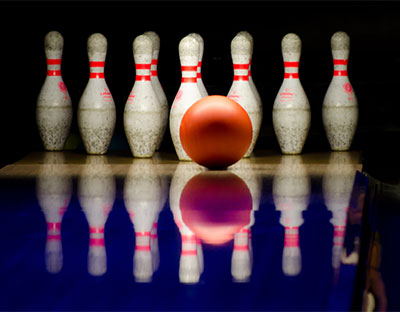
Now that you know a very brief history of bowling, it’s time to get to know the various alternative ways to play this ancient game. The most popular form of the game is the classic ten pin version. This is the version you are surely most familiar with and have played countless times. The classic game objectives are to knock over as many pins in 10 frames as possible. The pins stand at 15 inches tall and 4.7 inches wide. The bowling ball has three holes and can vary in weight depending on what the bowler prefers. 60 feet of space stands between you and the pins, so make sure you hit them all! There is currently no indication when this immensely popular version of bowling started, but earliest depictions of the game date back to the year 1299! You can find this version of bowling at close to any bowling center out there so put your bowling shoes on and show us how it’s done!
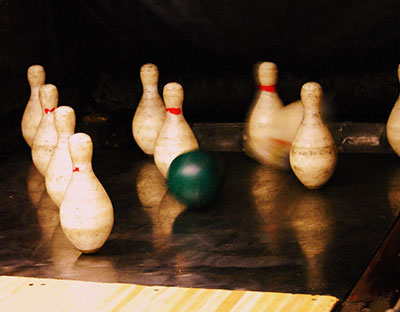
Another variation of bowling that is taking family entertainment centers by storm recently is Duckpin bowling. Duckpin bowling is incredibly similar to the classic ten pin version with only a few minor changes. The first change is the pin size. The pins are much shorter and appear much fatter. Instead of the ordinary 15 inch tall pin, Duckpin uses a pin that is only 9 inches high but are much more wide and appear easier to hit. These shorter, thicker pins may appear easier to hit, but instead make it extremely difficult to achieve a strike! Duckpin bowling balls are drastically smaller compared to a traditional bowling ball and are similar to the size of a softball. Duckpin bowling is becoming increasingly more popular and could possibly be heading to a city near you soon!
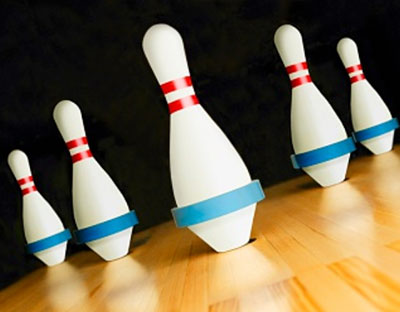
One of the wildest adaptations of bowling is Five-Pin bowling and was actually created in order to relax stressful bowlers! Five-Pin was devised in the year 1909 by a Canadian bowling center owner who was getting complaints that Ten Pin bowling was too strenuous. The Canadian gentlemen understood completely and removed half of the pins to make the game a tad easier. The pins were then cut down to roughly 75% their size but were given a rubber ring at the widest area of the pin. The ring was added so when that the pin moves farther when hit increasing the chances of hitting additional pins! Scoring for this method of bowling is also drastically different. The pin in the center is worth 5 points if hit, those on either side of it are three points each while the two outermost pins are each worth two points. Bowlers are given three opportunities to roll the rubber ball three times and if you hit all 5 pins down on the first throw you are given a score of 15! With a perfect score of 450 points, who wouldn’t want to play this simple version of bowling!
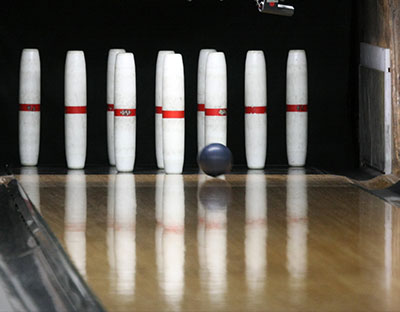
One of the most unfamiliar versions of bowling is called Candle Pin Bowling and was actually started in 1880. This version of bowling is incredibly different from the traditional Ten Pin Bowling in multiple aspects. The most obvious differences when looking at Candle Pin is how the pins are arranged, the size of the bowling balls, the size of the pins, and how many throws you get per frame. The pins are not set up in the triangle formation one would typically see while bowling. Candle Pin bowling has 10 pins, but they are set up in two horizontal rows. The back row holds 7 pins and the front row has 3 pins. The pins are much taller and thinner compared to the traditional pin seen when bowling. The bowling balls are equivalent to the size for Duckpin, which are about the size of a small softball. Since the ball is smaller and the pins are much more difficult to knock over, you are given three opportunities to bowl each frame. A perfect score consists of 300 points, however, the highest score ever recorded is a 245 proving just how difficult this game is. Candle Pin is popular in Canada and the North East part of the United States. Give Candle pin Bowling a shot and see if you can beat that 245 score!
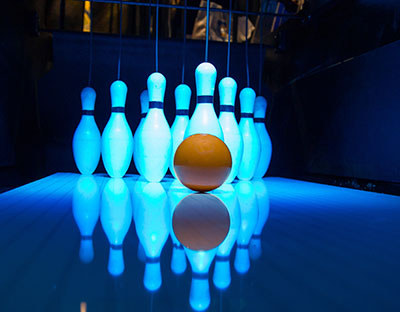
If you are more of the arcade junkie type, a popular version of bowling has been paving its own path in the family entertainment world recently. Mini Bowling is a scaled down version of traditional ten pin with the length approximately a third of the size! The rules are the exact same, however the pins and ball are also shrunk down to an arcade size appearance. Odds are you will find this child friendly version of bowling inside an arcade or family entertainment center. This version is perfectly safe for bowlers of all ages to play. Bumpers can even be added to this version, increasing its appeal with children and families. With bright LED lights and joyous music in the background, how could you resist not playing this simple yet intricate version of bowling?
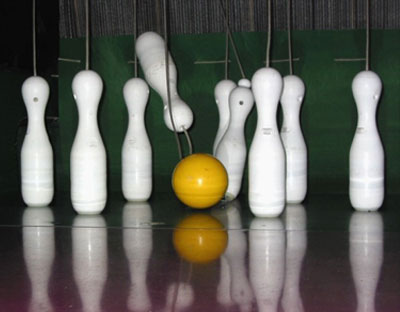
Have you have ever thought to yourself, “Ugh! I always somehow seem to get only 9 pins, why isn’t there a version with fewer pins?” Well fear no more, Nine-Pin Bowling may be perfect for you! As astounding as this may sound, Nine-Pin Bowling originates all the way back to the year 1810 and currently has 130,000 registered bowlers. This version of bowling is approximately 65 feet in length, has a similar bowling ball as Duck-Pin, and is very popular in European countries. The nine pins are arranged in a diamond shape at the end of non-oiled lanes. You would imagine the goal of the game to be to hit every pin down in the least amount of throws as possible, but that isn’t the case with Nine-Pin. The goal of nine pin is to knock all but the center pin down to receive the most points. If you hit all the pins down you receive a score of 9, but if you hit all pins but the middle red pin you receive 12 points. Think you have what it takes to score a 12? Contact your nearest bowling center, ask if they offer Nine Pin Bowling, and best of luck to you!
Now that you are well educated on the main alterations of bowling, which is your favorite? Traditional bowling is perfect for new bowlers, duckpin is perfect for bowlers who are laid back and looking for a relaxing time, 5 pin is for experienced bowlers who want to switch things up a bit, and Candle Pin is perfect for bowlers looking for a challenge. So, whatever kind of bowler you are, get out there and bowl your hearts out!